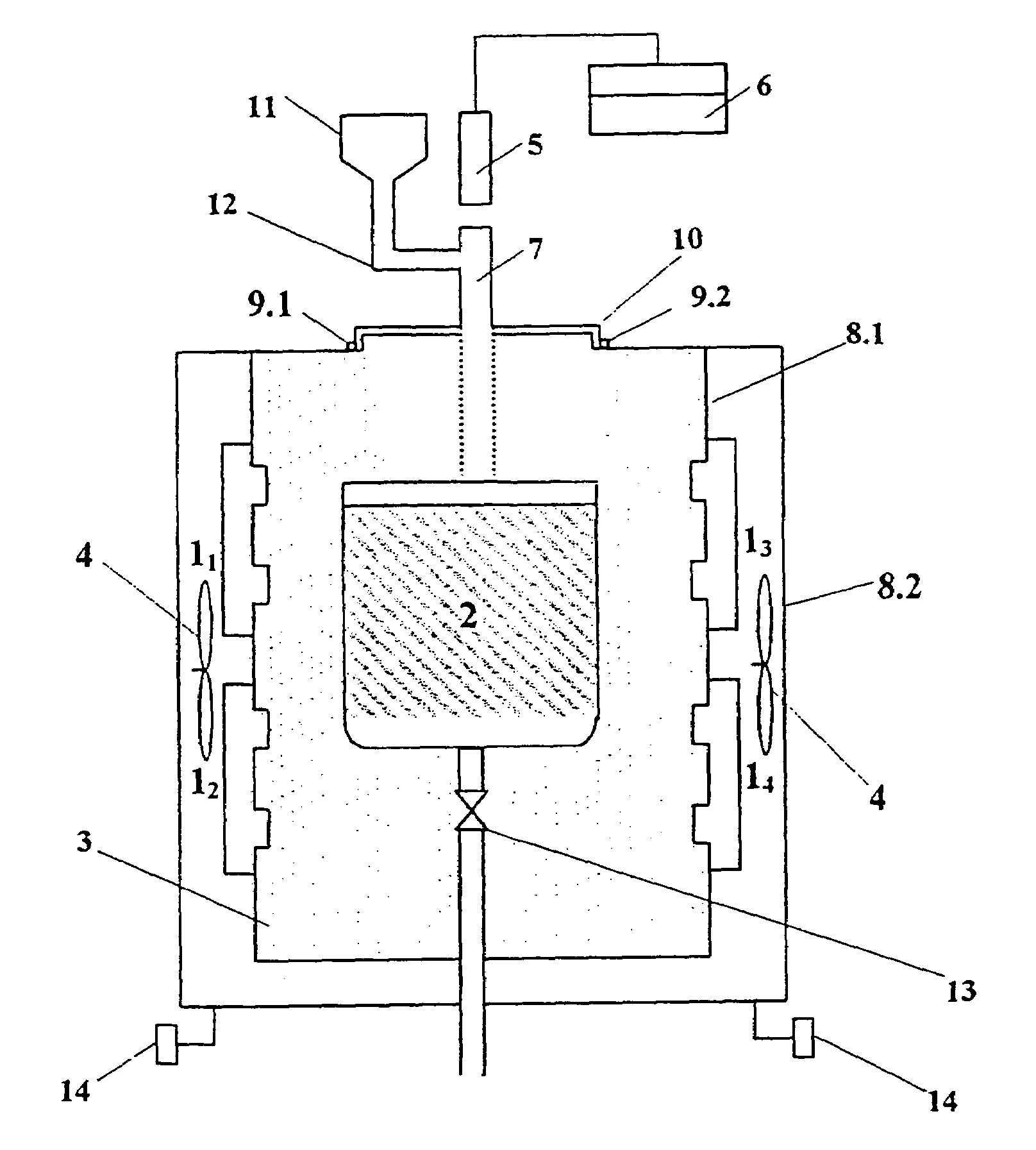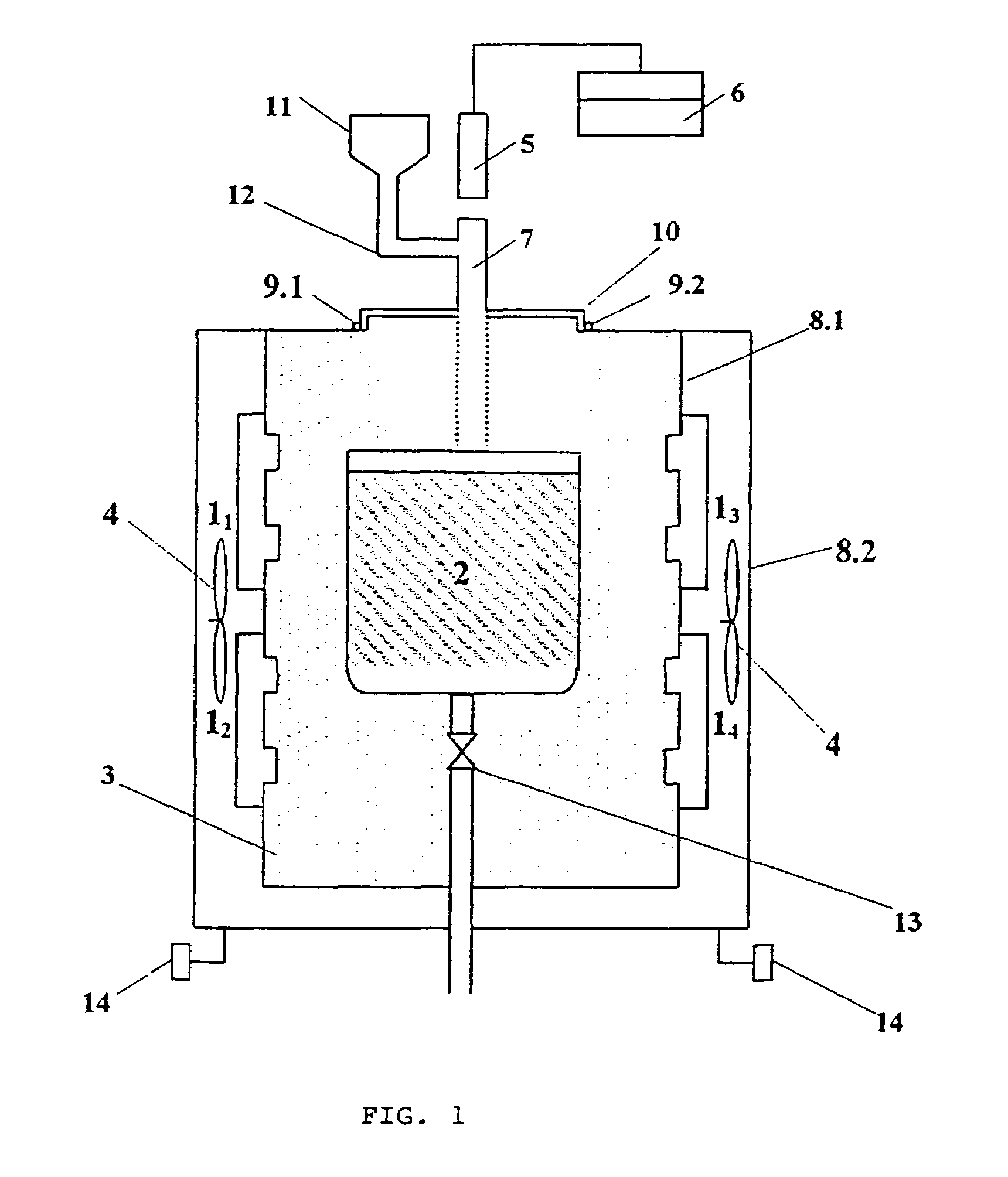Method and apparatus for heat treatment of glass material and natural materials specifically of volcanic origin
a technology of glass material and natural materials, which is applied in the direction of lighting and heating apparatus, furnace components, electric heating of furnaces, etc., can solve the problems of heavy weight and robustness of furnaces, limited use, and unpleasant working conditions, and achieve the effect of accelerating the melting process
- Summary
- Abstract
- Description
- Claims
- Application Information
AI Technical Summary
Benefits of technology
Problems solved by technology
Method used
Image
Examples
example 1
[0026]5 kg of crushed transparent glass cullet of particle size from 2 to 6 mm and 100 g of compact tungsten carbide (WC) were charged into a ceramic crucible with a capacity of 4 liters (l) in volume whereupon the crucible was put into a microwave furnace. After closing the furnace cover the crucible contents was heated up by means of microwave radiation with a frequency 2450 MHz and power 4 kW until the batch was melt. The glass melt was maintained at a temperature of 1200±50° C. and processed in forming various utility items.
example 2
[0027]2 kg of the mixture consisting of a lead crystal batch and 50 g of compact tungsten carbide (WC) were charged into a ceramic crucible with the capacity of 4 liters then the crucible was put into a microwave furnace. After closing the furnace cover the crucible contents was heated by microwave radiation at a frequency of 2450 MHz and power 2 kW until the glass was melted and then the glass melt was refined at a temperature of 1450° C. and thereafter at 1200±20° C. The glass melt was further maintained at this temperature and utilized in production of various utility items.
example 3
[0028]The glassmaking process according to example 2 was repeated under substantially the same conditions with the exception that as additives the following compounds were employed one after other: tungsten carbide—WC, silicon carbide —SiC, boron carbide—B4C, titanium carbide—TiC or vanadium nitride—VN, boron nitride—BN, silicon nitride—Si3N4 or titanium boride—TiB2, niobium boride—NB2, vanadium boride—VB2, tungsten boride—WB2, zirkonium boride ZrB2, and aluminum boride AIB2.
PUM
| Property | Measurement | Unit |
|---|---|---|
| temperature | aaaaa | aaaaa |
| frequency | aaaaa | aaaaa |
| frequency | aaaaa | aaaaa |
Abstract
Description
Claims
Application Information
 Login to View More
Login to View More - R&D
- Intellectual Property
- Life Sciences
- Materials
- Tech Scout
- Unparalleled Data Quality
- Higher Quality Content
- 60% Fewer Hallucinations
Browse by: Latest US Patents, China's latest patents, Technical Efficacy Thesaurus, Application Domain, Technology Topic, Popular Technical Reports.
© 2025 PatSnap. All rights reserved.Legal|Privacy policy|Modern Slavery Act Transparency Statement|Sitemap|About US| Contact US: help@patsnap.com


